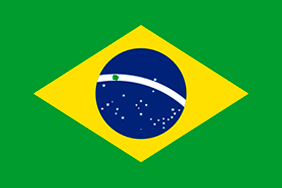Warning: Trying to access array offset on value of type bool in /home/wwbiof/public_html/wp-content/themes/jupiterx/lib/api/image/functions.php on line 61
Warning: Trying to access array offset on value of type bool in /home/wwbiof/public_html/wp-content/themes/jupiterx/lib/api/image/functions.php on line 62
Warning: Trying to access array offset on value of type bool in /home/wwbiof/public_html/wp-content/themes/jupiterx/lib/api/image/functions.php on line 63
Warning: Trying to access array offset on value of type bool in /home/wwbiof/public_html/wp-content/themes/jupiterx/lib/api/image/functions.php on line 61
Warning: Trying to access array offset on value of type bool in /home/wwbiof/public_html/wp-content/themes/jupiterx/lib/api/image/functions.php on line 62
Warning: Trying to access array offset on value of type bool in /home/wwbiof/public_html/wp-content/themes/jupiterx/lib/api/image/functions.php on line 63
Warning: Undefined array key "extension" in /home/wwbiof/public_html/wp-content/themes/jupiterx/lib/api/image/class-image-editor.php on line 179
Warning: Trying to access array offset on value of type bool in /home/wwbiof/public_html/wp-content/themes/jupiterx/lib/api/image/functions.php on line 61
Warning: Trying to access array offset on value of type bool in /home/wwbiof/public_html/wp-content/themes/jupiterx/lib/api/image/functions.php on line 62
Warning: Trying to access array offset on value of type bool in /home/wwbiof/public_html/wp-content/themes/jupiterx/lib/api/image/functions.php on line 63
Warning: Undefined array key "extension" in /home/wwbiof/public_html/wp-content/themes/jupiterx/lib/api/image/class-image-editor.php on line 179
A Reserva Extrativista Rio Preto Jacundá, localizada a nordeste do estado de Rondônia, é casa para 130 comunitários, cuja subsistência é baseada em atividades extrativistas e na agricultura de pequena escala. Apesar de toda a riqueza natural presente na floresta, os comunitários vivem com renda abaixo do nível de pobreza, dependentes de programas de auxílio do governo e sob ameaça de segurança de seu território.
O projeto REDD+ Jacundá é uma construção coletiva entre a Associação de Moradores da Reserva, a ONG Rio Terra, Secretaria de Desenvolvimento Ambiental (SEDAM) de Rondônia e a Biofílica, para que os comunitários busquem maior autonomia de gestão e econômica da Reserva. Para que eles se tornem protagonistas do processo de tomada de decisão e possam contribuir de forma direta na conservação da biodiversidade na Reserva, diversas oficinas vêm sendo realizadas em um processo de longo prazo e cíclico de diagnóstico, capacitação, conscientização, planejamento coletivo e, fase que se inicia agora, execução das atividades.
Para chegar até este momento, ocorreram duas importantes oficinas em que se definiu o “Plano de Vida” da comunidade e a “Construção do Mecanismo de Repartição de Benefícios e Resolução de Conflitos” do Projeto REDD+.
O Plano de Vida dos moradores da Reserva, feito a partir de uma análise da realidade local e da definição de crenças, valores e princípios, visa nortear a elaboração de um Plano de Trabalho que responda às necessidades e anseios da comunidade. Os moradores foram motivados a falar e refletir sobre a realidade local em relação a questões socioambientais, culturais, políticas e econômicas, resultando na construção de um Plano de Ação que reflete diversos anseios da comunidade como o resgate da medicina popular e saúde preventiva, maior geração de renda, investimentos em educação e capacitação técnica, melhoria das moradias, a inclusão de jovens, a maior participação de mulheres, conservação ambiental, entre outros.
Já a construção coletiva do mecanismo de repartição dos benefícios gerados pelo projeto, busca formar a base para que este mecanismo esteja alinhado aos anseios da comunidade e seja conduzido de maneira transparente e participativa. Os principais pilares definidos pela comunidade para a criação do Mecanismo de Repartição de Benefícios foram: alinhamento com as demandas da Reserva, garantindo viabilidade social, ecológica, cultural e econômica do modo de vida extrativista; incentivo ao empoderamento de gênero e fortalecimento cultural; promoção de investimentos em infraestrutura, comunicação, educação, e meios de geração de renda; e, gestão colegiada e comprometida com os anseios comunitários. Em adicional foi definido que a governança contará com a contribuição e experiência das instituições parceiras da Reserva – Asmorex, Biofílica, CES Rioterra, SEDAM e UNIR – via um Conselho Gestor que se reunirá periodicamente e norteará as atividades do Projeto.
Estas oficinas foram decisivas para o processo de estruturação do projeto, além de serem uma amostra de como a gestão do projeto será conduzida nos próximos anos: incentivando o empoderamento social para proporcionar uma melhoria significativa na qualidade de vida dos comunitários e conciliando o desenvolvimento socioeconômico com a conservação ambiental.


